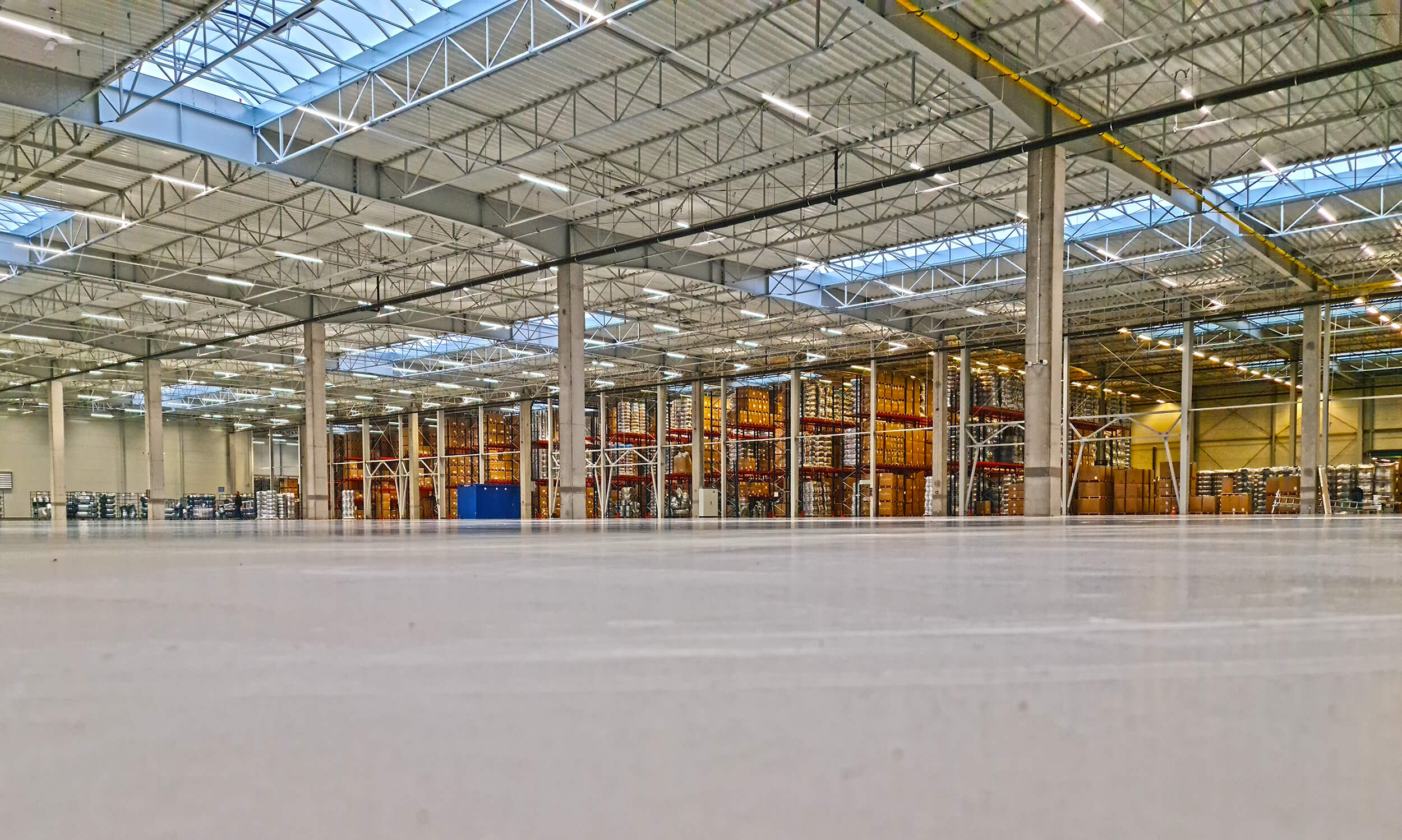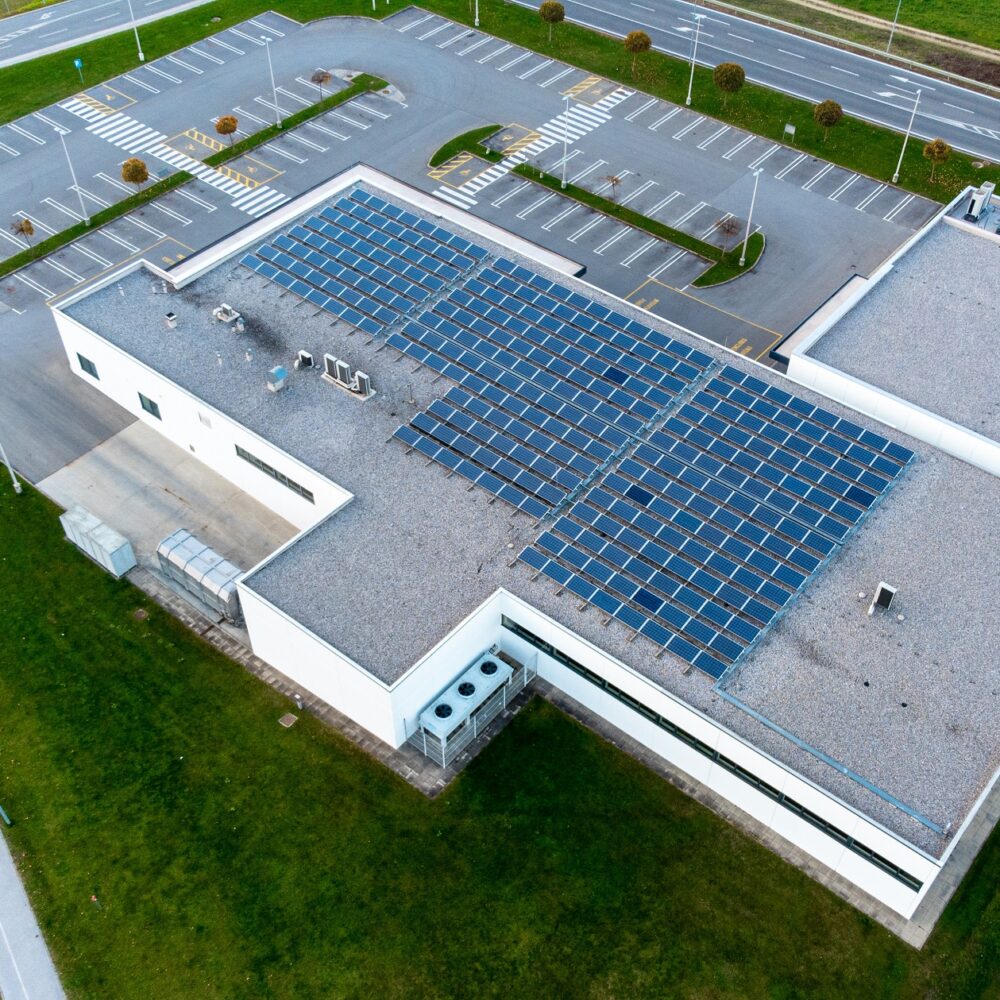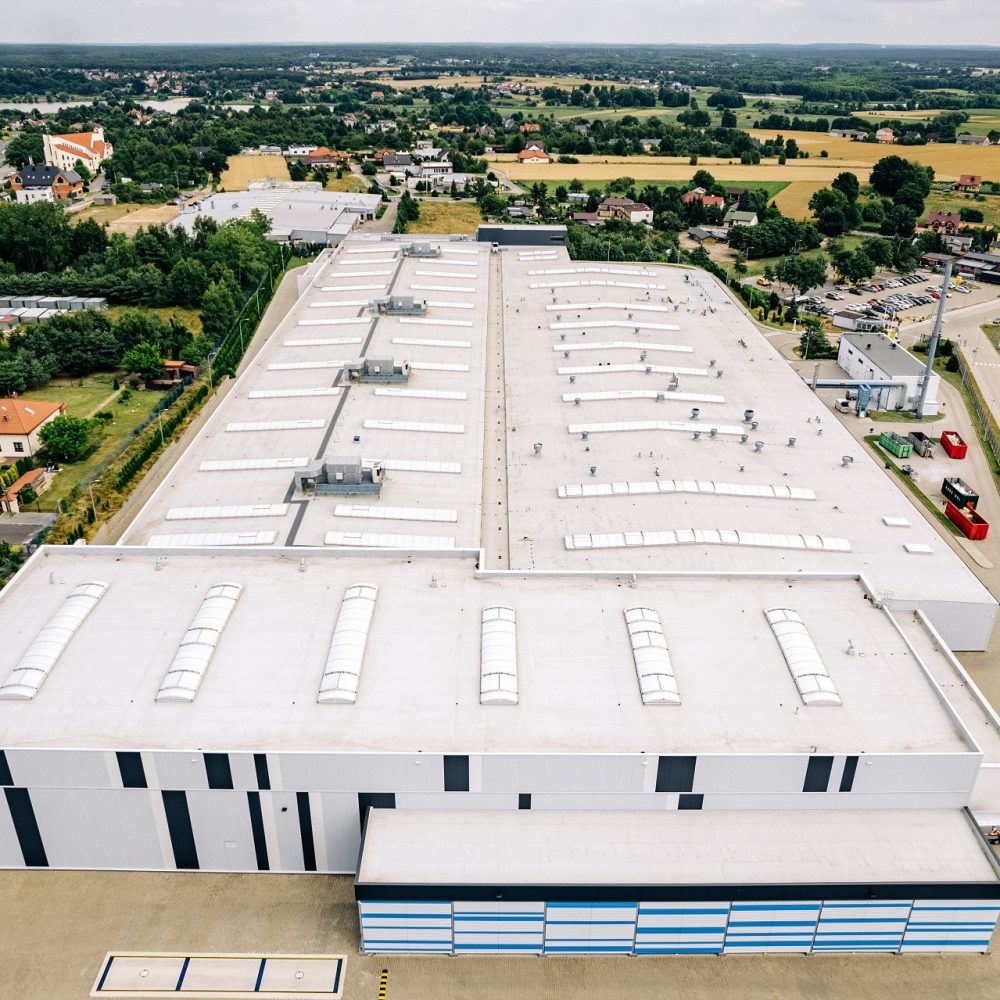
There has been heated debate on sustainability in industrial construction going on in the recent years, all due to the increasing demands on the energy efficiency of buildings. The use of certified, environmentally-friendly building materials and the application of innovative, sustainable building management systems have already become a valid standard. But the transformation of warehouses is also affecting other areas. What does it affect? It is primarily about the rapidly changing office space accompanying the buildings – both the office finish standards, and their share in the total usable area of facilities are steadily growing. This is also reflected in the appearance of warehouses with increasingly bold, colourful façades which are slowly changing the image of industrial areas in cities.
Until a few years ago, warehouses were considered only as storage space, so they posed no major challenge for general contractors to complete. Today, in addition to their primary function, they often act as a business premises for all the company’s operations. And that makes them more presentable. Investors’ and tenants’ requirements as to the quality of the space are increasing, which in turn requires a completely different approach to hall design the construction process. A Commercecon’s expert specialising in industrial construction, shares his experience in this area.
Larger and more comfortable office space is a challenge for general contractors
Until recently, the office part of logistics facilities accounted for just a few per cent of the total area. This was usually some space separated from the warehouse area, with staff areas, the cloakroom, canteen and toilets. Today, according to the findings of Cresa Polska, the share of modern offices in the total area of new warehouse projects is up to 20%. The Tricity and Warsaw are leading in the new trend.
Industrial design is now approached very differently. Office space in warehouses is increasingly a separate usable area that is built using completely different technology than the warehouse space. Thanks to modern architectural solutions, the finishing standard does not differ from A-class office buildings located in large cities.
– We have been active in the industrial construction market for over 20 years. Over time, we have seen various trends and adapted our activities to the technical requirements of buildings and the new needs of investors. But the changes have never been so rapid as they are today – says Waldemar Buchcic, Construction Manager at Commercecon.
And it is hard to disagree with that. Construction of a warehouse with a modern office building requires contractors to engage their employees in more time-consuming construction and finishing works, is more expensive, but also often requires additional formal and legal effort for the contractor.
– This is the case when the finishing standard is changed during the project completion, and we know from experience that this happens. Investors and future tenants do not always realise that even a minor modification in the layout of the office premises requires us to prepare the appropriate documentation and obtain a building permit. And this may postpone the deadlines – Mr. Buchcic adds.
The office buildings integrated with modern warehouses are now representative, highly functional and comfortable. With large glazed areas, they are well lit, air conditioned, have intelligent building management systems (BMS) and are finished with superior materials. The layout is also close to that of typical office buildings – with a representative reception desk, comfortable conference rooms, and the office space arranged according to the individual needs of the tenant. An unquestionable advantage of such premises, in comparison with those in city centres, is the large space around the building. It allows for the creation of spacious car parks, but also makes it possible to arrange spacious green areas and outdoor relaxation zones that employees will appreciate. These latter solutions fit in perfectly with the policy of sustainable construction.
Check our offer – General contracting of halls and other industrial buildings.
Neutrality of warehouse buildings as a goal for the years to come
The transitions in the industrial construction business are dictated by investors’ growing awareness of sustainable solutions, but also by the development of technologies used during construction. It all starts with energy-efficient materials which allow buildings to be insulated ever more efficiently. Commercecon uses them in its projects.
– We have just finished construction of the first of two warehouse halls at ul. Maratońska under the 7R Park Łódź West II project. The facility has been adapted to the latest Technical Conditions 2021 introduced early this year, which are the result of the adaptation of Polish regulations to EU legislation. All glazing units are therefore triple-glazed, i.e. the windows have a heat transfer coefficient of 0.9 W/(m²K) and the external partitions 0.21 W/(m²K). The warehouse will not cool down in winter or overheat in summer. This will significantly reduce the energy for HVAC systems – the Commercecon expert explains.
Modern warehouse designs also have a strong focus on solutions that reduce daily operating cost. LED lighting system, motion and daylight sensors, efficient water management systems (grey water system, use of rainwater, monitoring of water consumption) as well as advanced building management systems help to achieve this.
– Storage facilities are also increasingly powered by renewable energy sources, with photovoltaic panels being the most popular. Efficient systems can cover a large part of a hall’s electricity demand. They are usually mounted on the building roof – its large surface area and slight inclination create ideal conditions for such installations, but they can also be mounted on walls. An example of such a solution is the production and warehouse hall that we have delivered for Trefl-Kraków Card Factory – points out Waldemar Buchcic.
Warehouses becoming more colourful
The traditional image of a warehouse is inevitably associated with various shades of grey. However, builders are beginning to design innovative façade systems that stand out in both colour and functionality. The best example are the industrial facilities of the developer 7R.
– Commercecon was one of the first general contractors to have the opportunity to install façade panels according to the investor’s new guidelines. Firstly, the lighter colouring of the elements and their thicker structure are noteworthy, as they help to reduce the thermal absorption of the wall, and thus fit in with the trend for sustainable industrial construction. And, secondly, the vertical arrangement of the panels is definitely more captivating and modern-looking – concludes the Commercecon expert.



